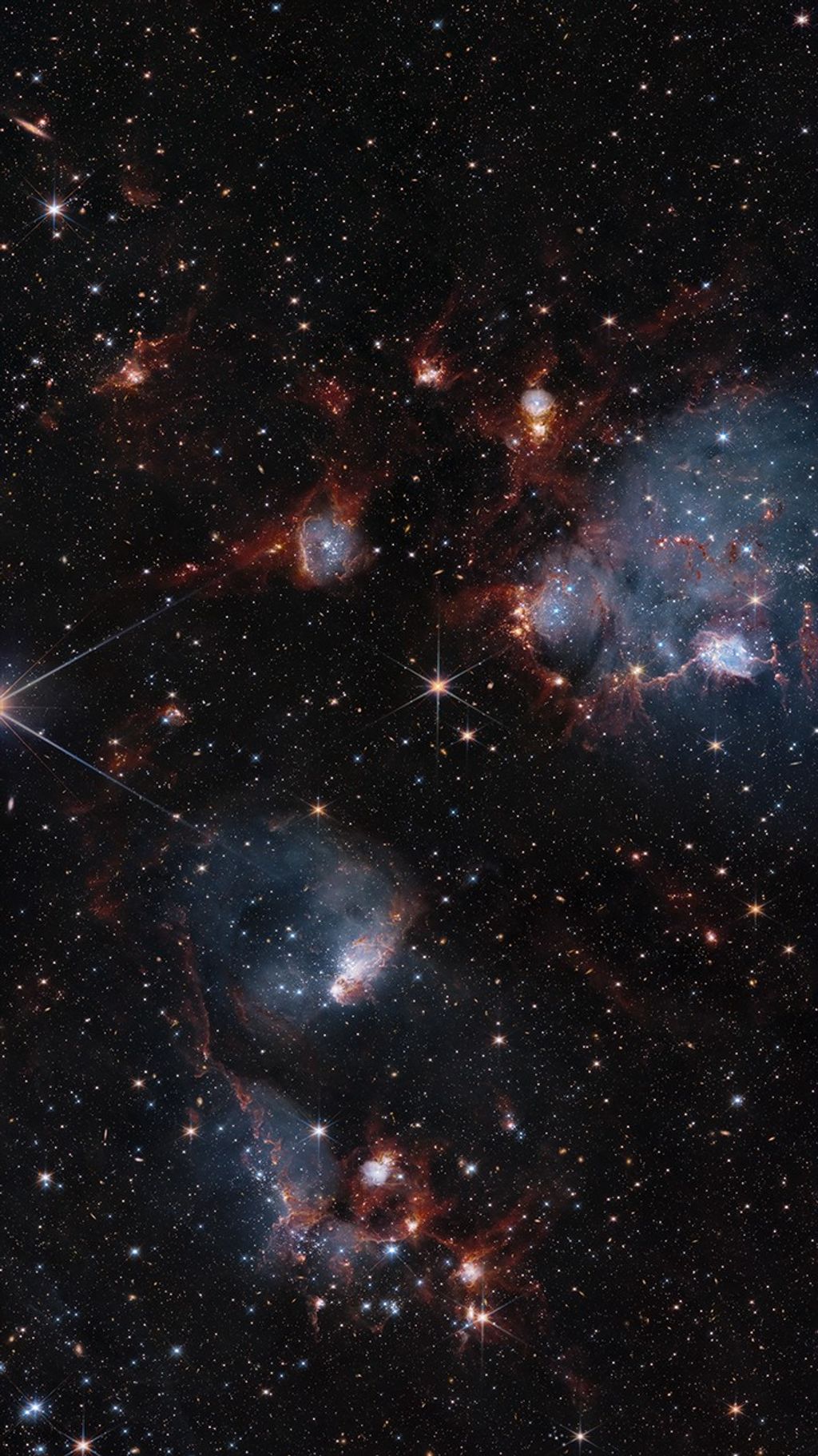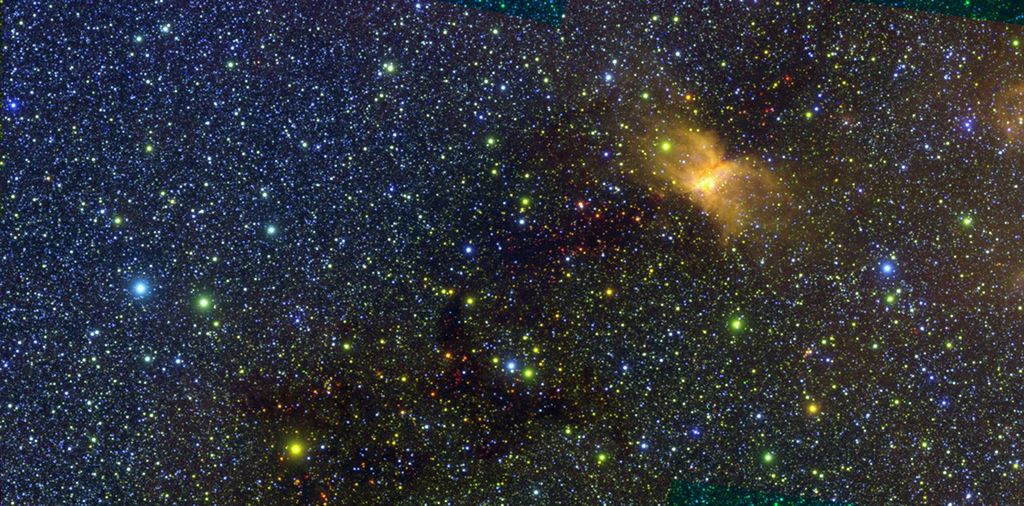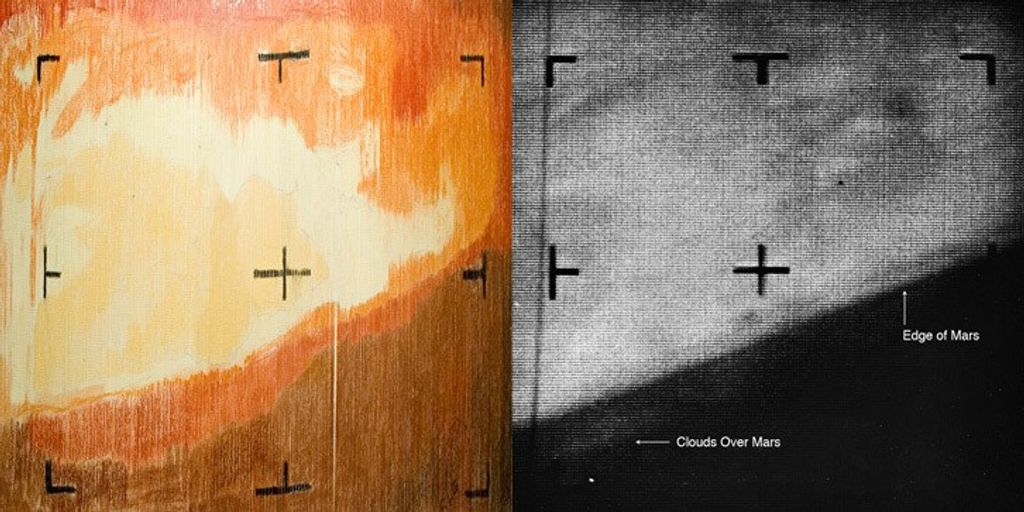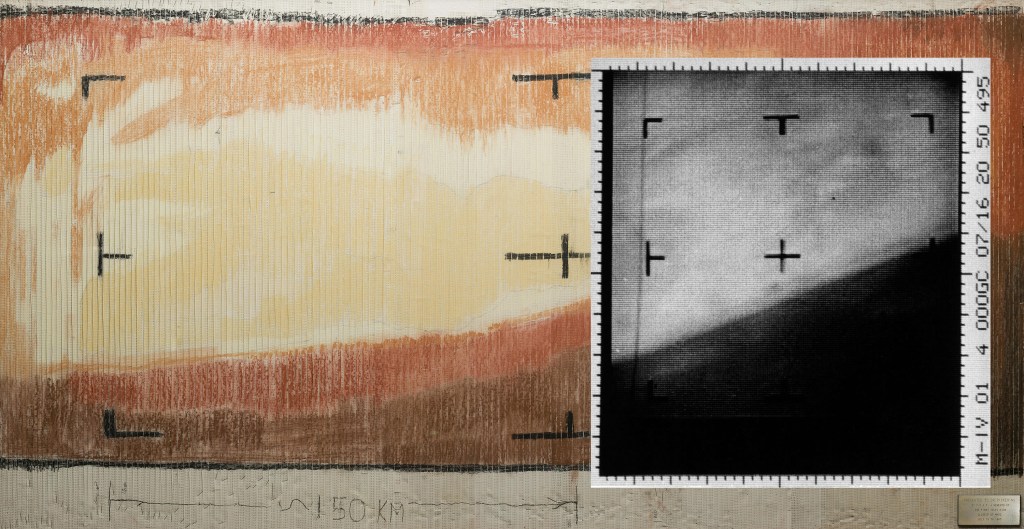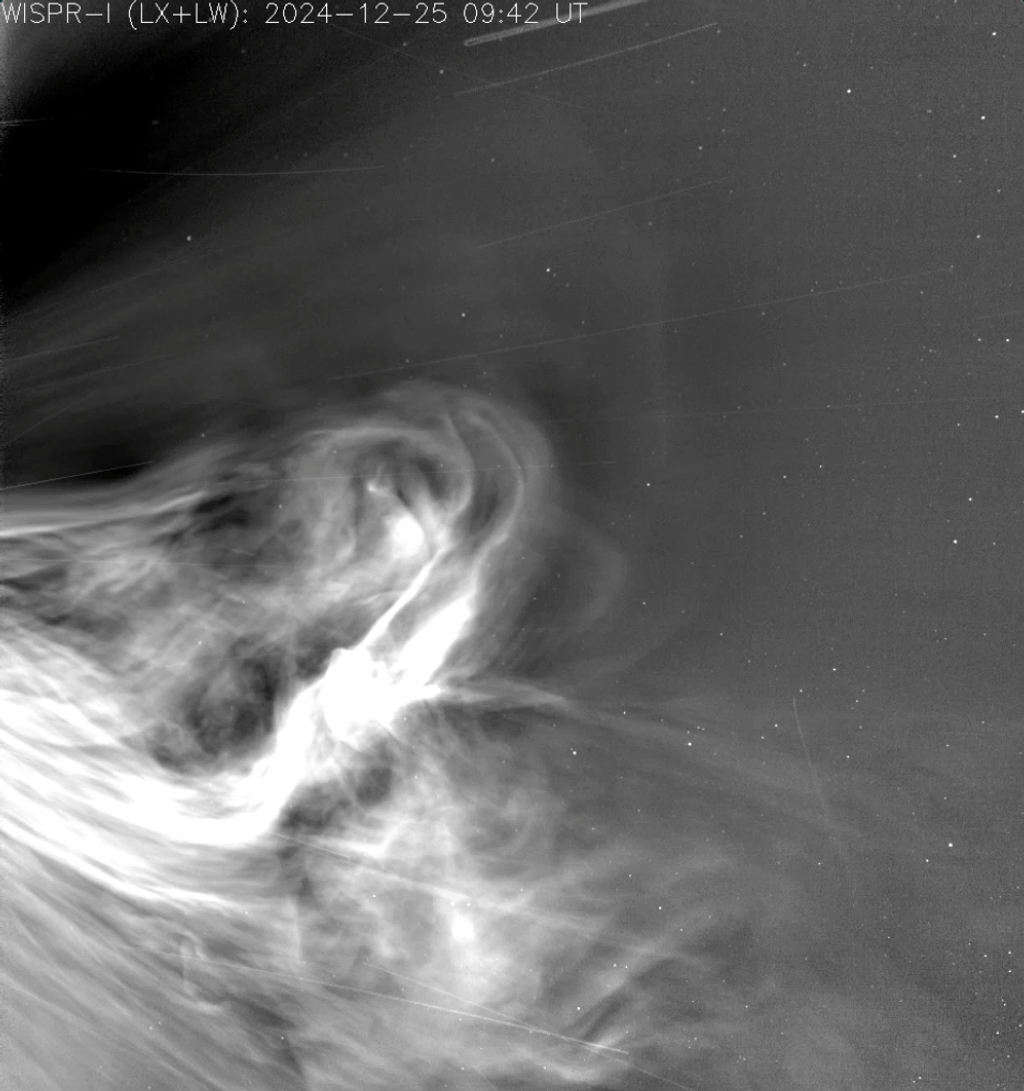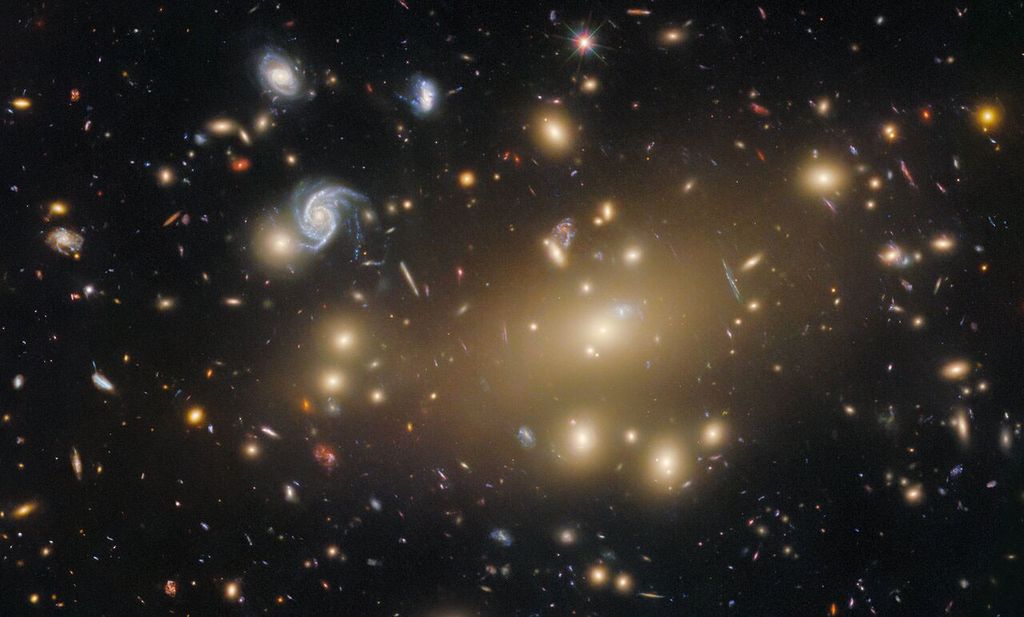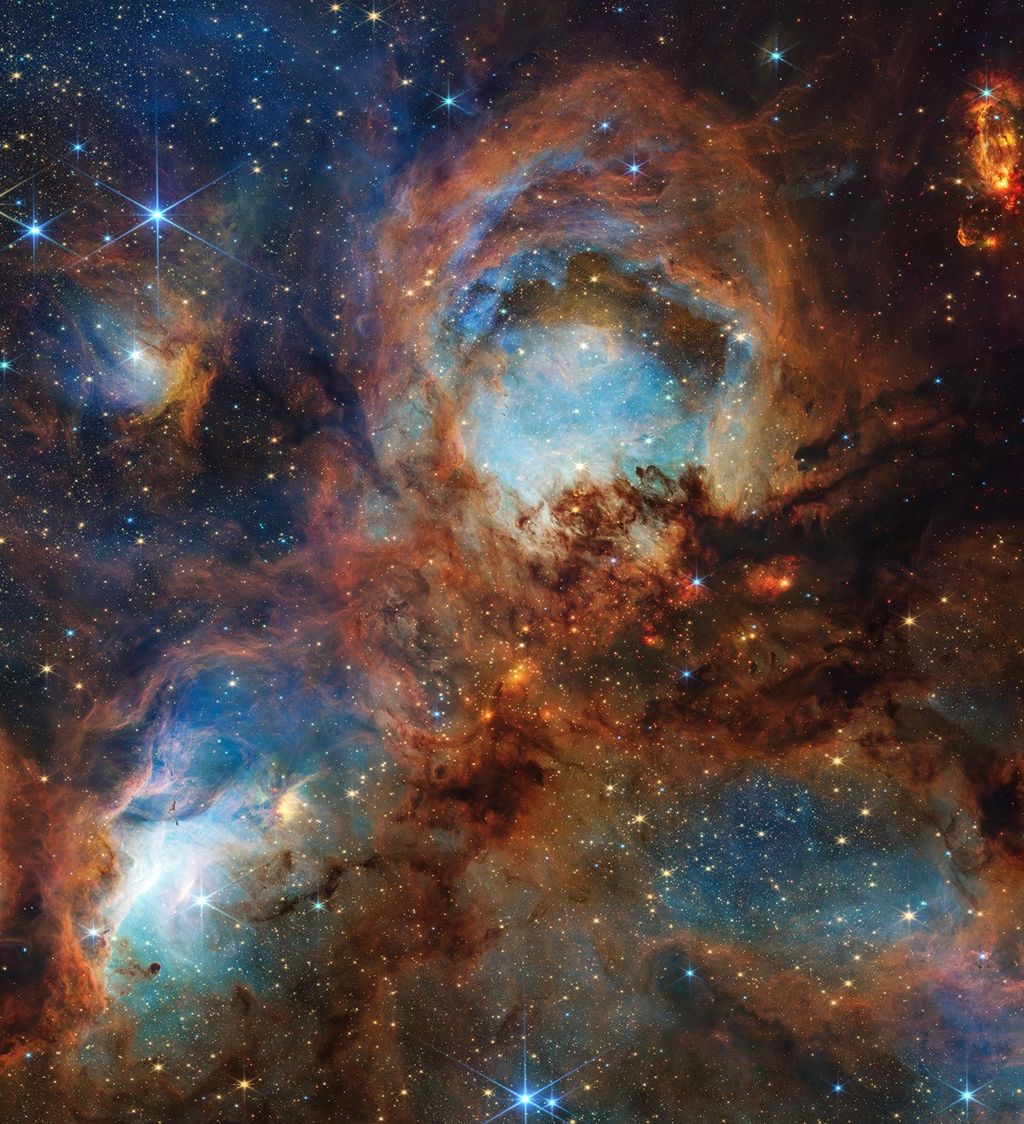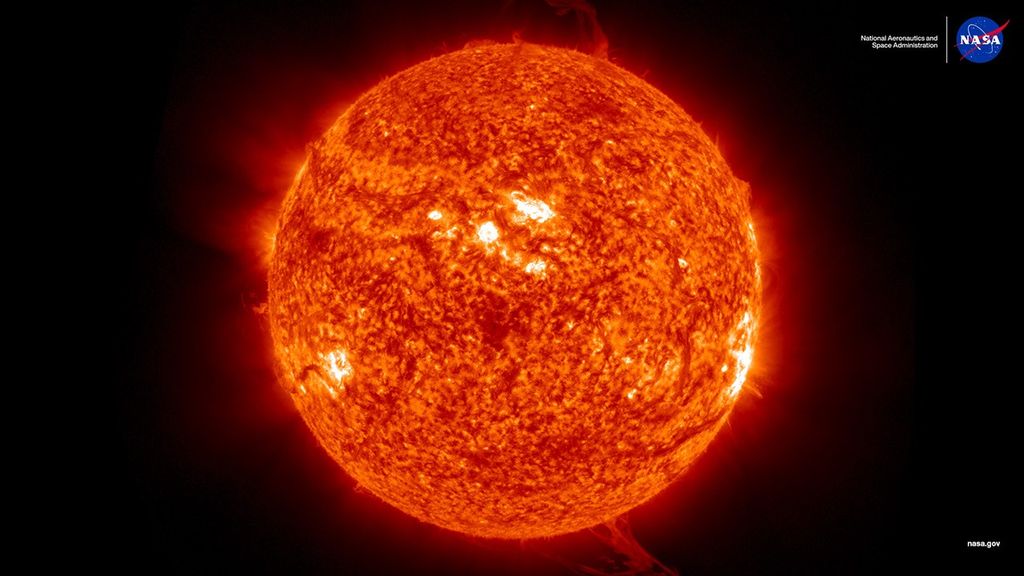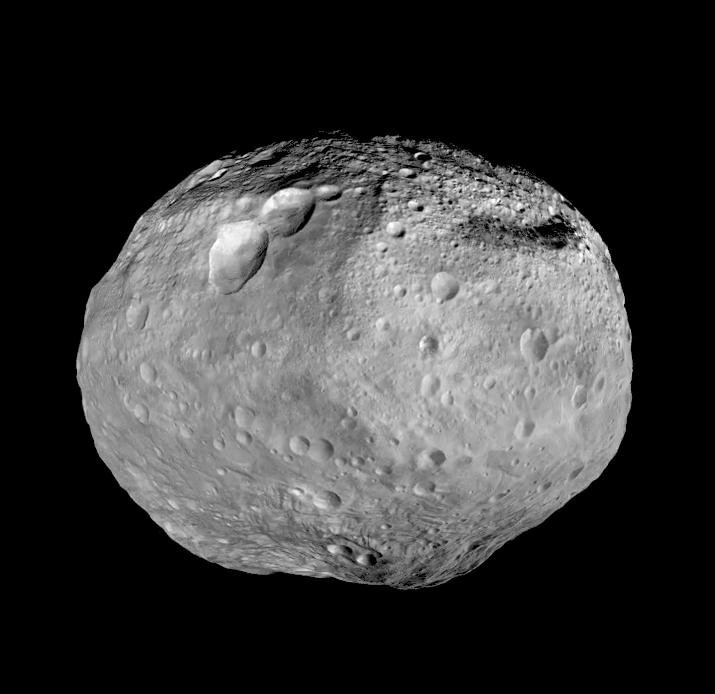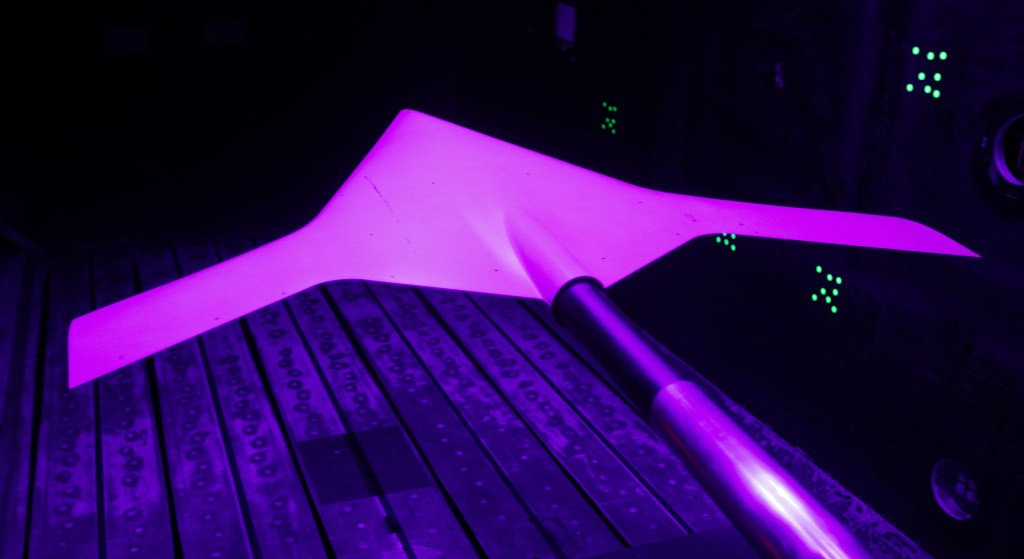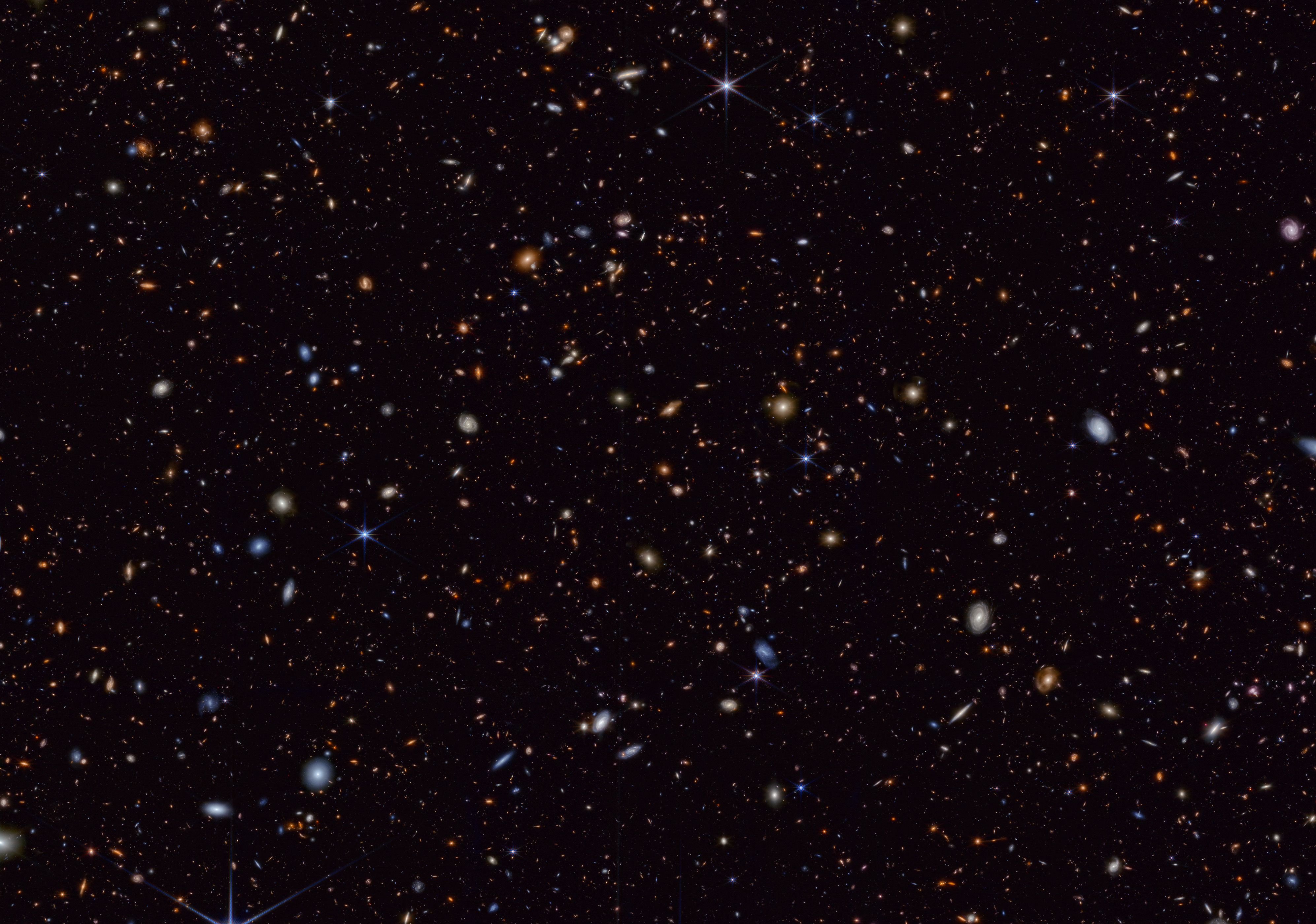1 min read
Hubble Pinpoints Doomed Star that Explodes as Supernova

Amidst the glitter of billions of stars in the majestic spiral galaxy called the Whirlpool (M51), a massive star abruptly ends its life in a brilliant flash of light. NASA's Hubble Space Telescope snapped images of the exploding star, called Supernova (SN) 2005cs, 12 days after its discovery. Astronomers then compared those photos with Hubble images of the same region before the supernova blast to pinpoint the progenitor star (the star that exploded).
The color image at left shows a section of M51 taken in January 2005 with the Advanced Camera for Surveys. The small green square marks the region where the progenitor star resides. The lower-right image shows a picture of SN 2005cs (the central bright object), taken July 11, 2005, by Hubble. By comparing the lower-right image with the color image at left, astronomers identified the supernova's progenitor star [marked by the arrow in the (pre-explosion) upper-right image]. The star was found to be a red supergiant whose mass is about seven to 10 times that of the Sun.
Every second, a star somewhere in the universe explodes as a supernova. Astronomers cannot see every supernova. Of the supernovas astronomers have seen, only six progenitor stars have been identified. Since Hubble can easily resolve stars in nearby galaxies, such as the Whirlpool, it allowed astronomers to track down the exploding star's identity in archival pictures.
SN 2005cs belongs to a class of exploding stars called "Type II-plateau." A supernova of this type results from the collapse and subsequent explosion of a massive star whose light remains at a constant brightness (a "plateau") for a period of time.
This finding is consistent with the idea that the progenitors of supernova explosions are red supergiant stars with masses eight to 15 times the Sun's mass. The progenitor star was found to be at the low end of the mass range for supernova explosions. Stars with masses lower than eight solar masses do not explode as supernovae at all, but rather contract to white dwarfs and blow off their outer atmospheres to become planetary nebulae.
Identification of the progenitor star was first reported in IAU Circulars 8556 and 8565 on July 3 and July 12, respectively, by Drs. Weidong Li and Alex Filippenko (University of California, Berkeley) and Schuyler Van Dyk (Spitzer Science Center, Caltech). The team submitted a paper describing their research to The Astrophysical Journal on July 18. A European team composed of Drs. Justyn Maund (Institute of Astronomy, University of Cambridge), Stephen Smartt (Queen's University, Belfast) and John Danziger (Trieste Observatory) reported similar results in a letter submitted on July 21 to the Monthly Notices of the Royal Astronomical Society.
About the Object
- R.A. PositionR.A. PositionRight ascension – analogous to longitude – is one component of an object's position.13h 29m 52.84s
- Dec. PositionDec. PositionDeclination – analogous to latitude – is one component of an object's position.47° 10' 36.3"
- ConstellationConstellationOne of 88 recognized regions of the celestial sphere in which the object appears.Canes Venatici
- DistanceDistanceThe physical distance from Earth to the astronomical object. Distances within our solar system are usually measured in Astronomical Units (AU). Distances between stars are usually measured in light-years. Interstellar distances can also be measured in parsecs.About 27 million light-years (8.3 Megaparsecs)
- DimensionsDimensionsThe physical size of the object or the apparent angle it subtends on the sky.The supernovae images are 3 arcseconds (400 light-years or 120 parsecs) wide.
About the Data
- Data DescriptionData DescriptionProposal: A description of the observations, their scientific justification, and the links to the data available in the science archive.
Science Team: The astronomers who planned the observations and analyzed the data. "PI" refers to the Principal Investigator.Pre-supernova data (top-right): The Hubble image was created from HST data from proposal 10452: S. Beckwith (STScI), R. Kennicutt Jr. (University of Arizona), and The Hubble Heritage Team (STScI/AURA). Post-supernova data (bottom-right): The Hubble image was created from HST data from proposals 10182: W. Li and A. Filippenko (University of California) et. al. - InstrumentInstrumentThe science instrument used to produce the data.HST>ACS/WFC (top-right), HST>ACS/HRC (bottom-right)
- Exposure DatesExposure DatesThe date(s) that the telescope made its observations and the total exposure time.January 19 - 22, 2005, Exposure Time: 23 minutes (top-right), July 11, 2005, Exposure Time: 20 minutes (bottom-right)
- FiltersFiltersThe camera filters that were used in the science observations.ACS/WFC (top-right): F814W (I) ACS/HRC (bottom-right): F330W (U)
- Object NameObject NameA name or catalog number that astronomers use to identify an astronomical object.Whirlpool, M51; SN 2005cs
- Object DescriptionObject DescriptionThe type of astronomical object.Spiral Galaxy; Supernova
- Release DateJuly 28, 2005
- Science ReleaseHubble Pinpoints Doomed Star that Explodes as Supernova
- Credit
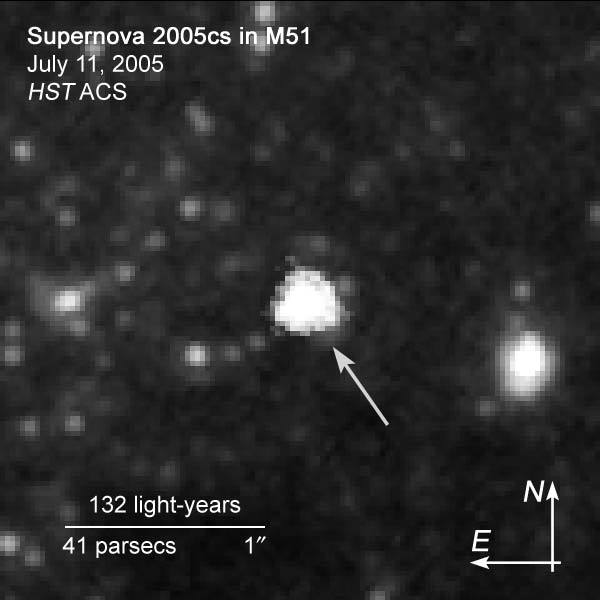
Share
Details
Claire Andreoli
NASA’s Goddard Space Flight Center
Greenbelt, Maryland
claire.andreoli@nasa.gov

